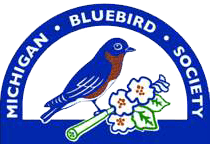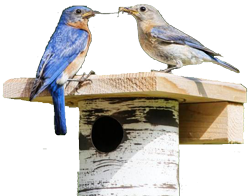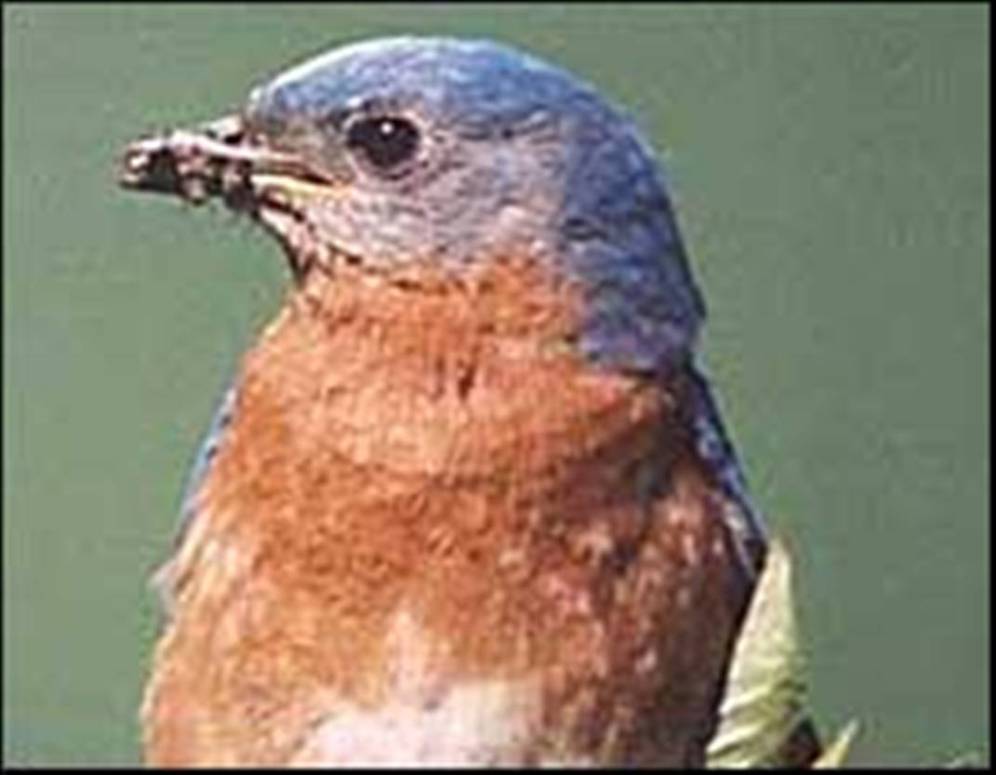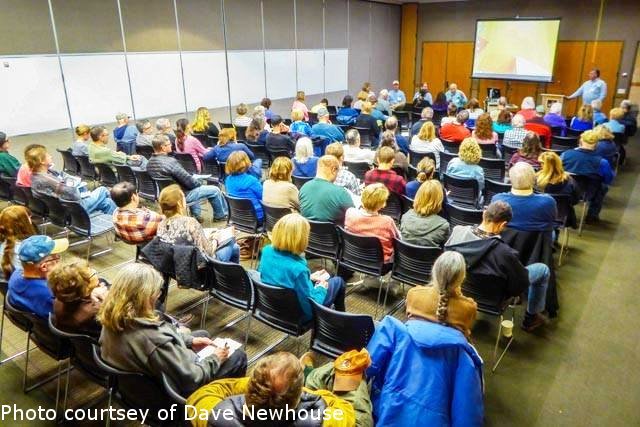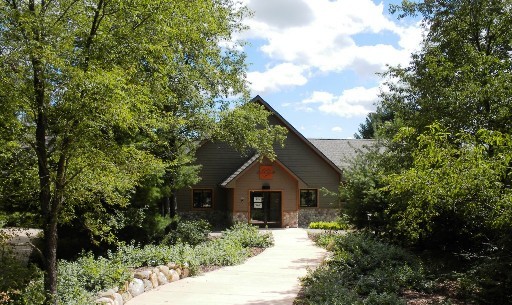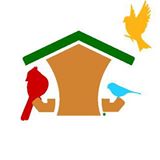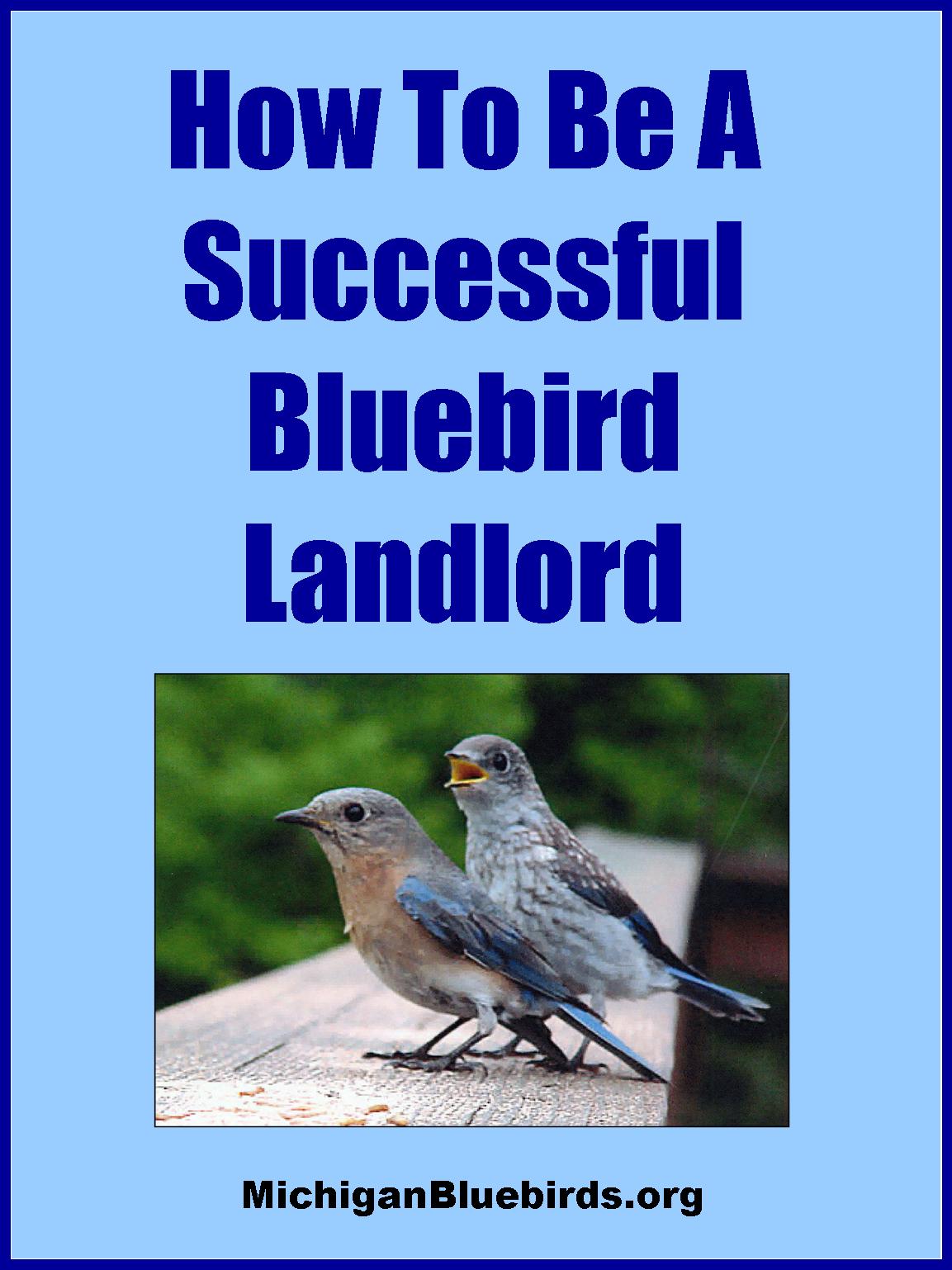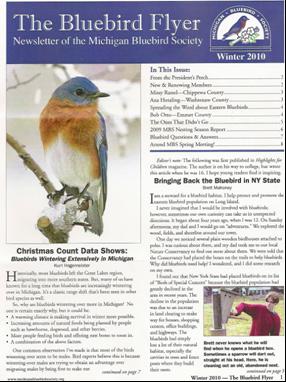ABOUT BLUEBIRDS
The bluebird is one of everyone's favorite backyard birds. 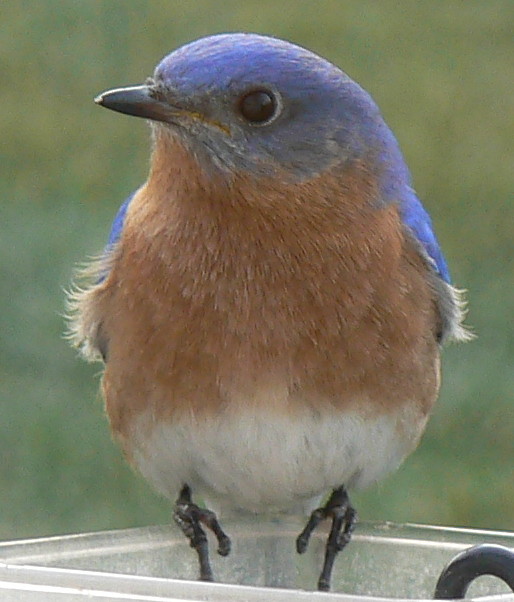 They have been around people in North America since before the first settlers arrived. Bluebirds seem to love being around humans and have been gracing farms, backyards, school and church grounds, golf courses, and parks with their presence for hundreds of years. They are one of the easiest of all birds to entice to nest with bird houses. But, they can also be attracted using feeders, water sources, and landscaping. Below, is some basic information to help you get started enjoying the bluebirds in your area!
They have been around people in North America since before the first settlers arrived. Bluebirds seem to love being around humans and have been gracing farms, backyards, school and church grounds, golf courses, and parks with their presence for hundreds of years. They are one of the easiest of all birds to entice to nest with bird houses. But, they can also be attracted using feeders, water sources, and landscaping. Below, is some basic information to help you get started enjoying the bluebirds in your area!
Brief History of Bluebirds in North America: Back in the 1700's when the eastern U.S. was getting populated, indications are that bluebirds were more common than they are now. As more and more farmland was created, bluebird numbers almost certainly expanded even more. Why? First, more farms meant there was more open habitat which bluebirds love. Second, the early settlers typically planted apple orchards. Apple trees are one tree which easily produces cavities which are perfect for bluebird nests. And third, in building these early farms, settlers would erect fences made of wooden posts from the trees they cleared. These many fence posts would eventually develop rotted out cavities and woodpecker holes which again, would provide ideal bluebirds nesting sites.
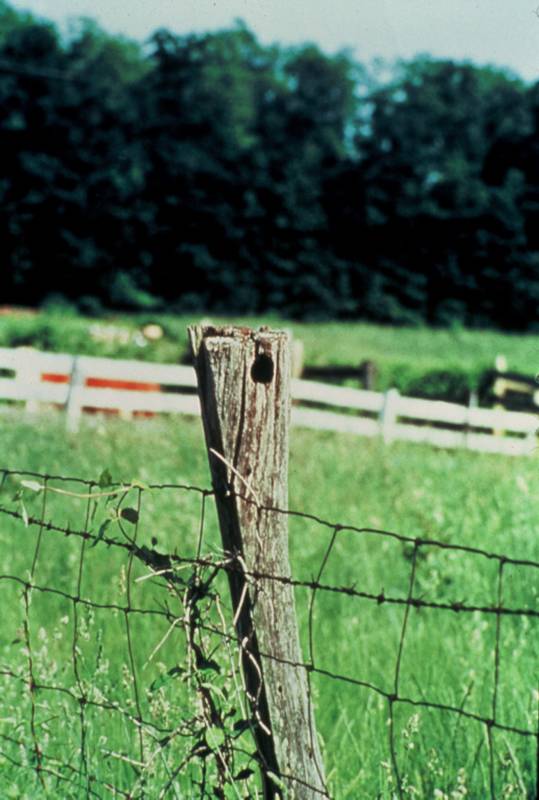 Bluebird numbers are believed to have expanded up until the late 1800's when two non-native bird species were introduced to the U.S. - the House Sparrow and the Starling. These two aggressive and invasive species quickly spread and out-competed bluebirds for natural nesting sites.
Bluebird numbers are believed to have expanded up until the late 1800's when two non-native bird species were introduced to the U.S. - the House Sparrow and the Starling. These two aggressive and invasive species quickly spread and out-competed bluebirds for natural nesting sites.
In addition, as urban areas expanded in the 1900's and pesticides started to be used in agriculture in increasing amounts, bluebird numbers declined more quickly. The 1930's saw the first efforts to help bluebirds. A man by the name of Thomas Musselman originated the idea of a "Bluebird Trail" in which many nesting boxes were erected and monitored along a long trail.
His first trail in Adams County Illinois consisted of over 1,000 nest boxes. The groundswell of interest in bluebird conservation gradually built up until the 1970's when Lawrence Zeleny wrote the landmark book The Bluebird: How You Can Help Its Fight For Survival. Mr. Zeleny helped found the North American Bluebird Society, which has grown to a national organization including 50 regional affiliate chapters including the Michigan Bluebird Society.
Happily, bluebird numbers have been showing healthy improvement over the last 15 years in many areas of North America thanks to the efforts of thousands of people just like you!
Geographic Range: 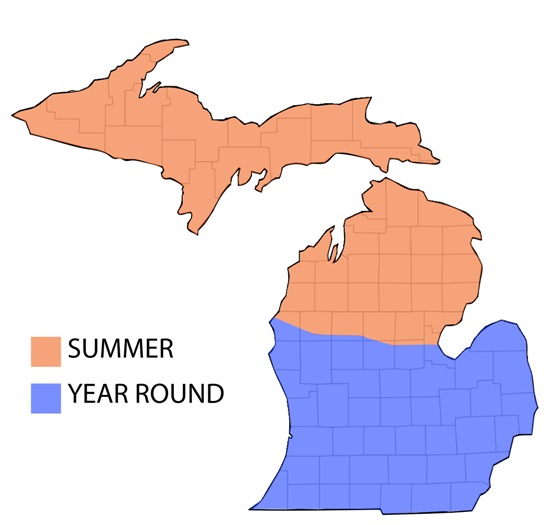 The Eastern Bluebird is found throughout eastern North America, from southern Canada to the Caribbean, and the Great Plains to the U.S. eastern coast. The Bluebird can migrate within this range, often going southward in numbers during the late Fall and Winter months. However, in recent years, the Eastern Bluebird has been expanding it's year-around range northward. Within Michigan the Bluebird is now a common resident in most southern counties throughout the year.
The Eastern Bluebird is found throughout eastern North America, from southern Canada to the Caribbean, and the Great Plains to the U.S. eastern coast. The Bluebird can migrate within this range, often going southward in numbers during the late Fall and Winter months. However, in recent years, the Eastern Bluebird has been expanding it's year-around range northward. Within Michigan the Bluebird is now a common resident in most southern counties throughout the year.
Physical Characteristics: The male eastern bluebird, 6 1/2 - 7 inches long, has a bright blue back, forehead, crown, shoulders, wings, and tail. Very faint black and white barring appears in the wing primaries. The throat and breast are rust, with a small white patch at the chin. The rust color continues down the sides under the wings, but the belly is white. The bill, eyes, and feet are black. A very faint white lower eye ring is not easily visible.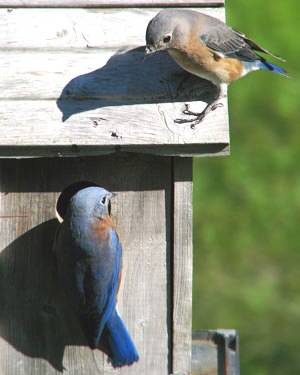 The female's front and wing markings are similar, but her blue is quite pale, a gray-blue on the head and back. The posture while sitting is usually hunched, the legs not outstretched. Juveniles are spotted in typical thrush pattern, molting into adult plumage in the fall.
The female's front and wing markings are similar, but her blue is quite pale, a gray-blue on the head and back. The posture while sitting is usually hunched, the legs not outstretched. Juveniles are spotted in typical thrush pattern, molting into adult plumage in the fall.
Food: Unlike tree swallows, bluebirds are not aerial feeders; they must be able to see their insect food on or near the ground. Although they sometimes beat low vegetation with their wings to scare up insects, a more typical feeding pattern is that of perching on a utility line, snag, or exposed tree limb. Watching the ground, darting down to the ground or dirt road to catch their prey, then either quickly returning to the perch to eat or flying to the nest to feed their young.
Bluebirds prefer soft-bodied insects the most including butterflies, spiders, flies, dragonflies, larval forms of insects (caterpillars), sod grubs, moths, crickets, small worms, cutworms, beetles, grasshoppers, apple maggots, corn borers, alfalfa beetles, and so forth. Occasionally, the parent will bring wild fruit such as pin cherries, chokecherries, or raspberries to the nestlings in Spring and Summer, but the primary food has to be protein.
In the Fall, bluebirds diets start to shift over to natural berries as insect supplies diminish. When bluebirds winter over in northern areas, these berries are what bluebirds will survive on. They will sometimes eat from feeders if food is in short supply.
You can plant berry-producing trees and shrubs that will attract bluebirds. See our section on bluebird gardening. Also, you can feed bluebirds using regular tray type bird feeders. Their favorite foods include meal worms, crumbled up suet, cornmeal, and sunflower hearts or chips. See our page on Feeding bluebirds for more information.
Habitat: 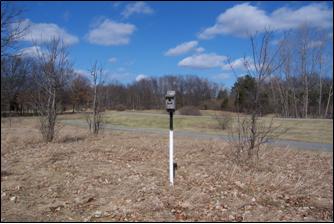 Bluebirds require fairly open habitats consisting of large, short grassy areas. Some scattered trees or perching spots like telephone wires or fences are also important since bluebirds like to use these for vantage points to hunt for insects.
Bluebirds require fairly open habitats consisting of large, short grassy areas. Some scattered trees or perching spots like telephone wires or fences are also important since bluebirds like to use these for vantage points to hunt for insects.
Bluebirds usually require from 1 to 2 acres of open territory around their nesting site in order to find enough food to raise their young. This doesn't mean that you need to have this much space in your yard to attract bluebirds. It just means that between your yard and the adjoining properties close to the nesting box, there is this much space.
Good types of locations for bluebird boxes include pastures, meadows, church yards, business parks, public recreational parks, golf courses, and farm fields. Areas which are NOT good habitats include subdivisions with small lots, densely populated suburbs, heavily wooded neighborhoods, and urban areas.
Bluebird Nesting Cycle: Depending on whether they migrate or not, bluebirds can begin scouting out possible nesting sites as early as January in Michigan. But, more typically, this will occur in February into early March, depending on how cold the weather is. Bluebirds may appear in pairs or as a single male at nest boxes in late Winter, and they may disappear/return every few days. This is not uncommon as they are looking at different nesting sites and changing weather conditions dictate where they search for food. At some point though, a pair of bluebirds will choose a nest box and be seen sitting on or near it regularly. Bluebirds will sing sporadically during this time period, but not necessarily when they are sitting on top of a nest box. It's more common to see them singing from atop a tree. Nest building will commence as the weather gets more mild in the later part of March or early April.
Bluebirds build a nest of all grass, tightly woven into a neat, round nest which fills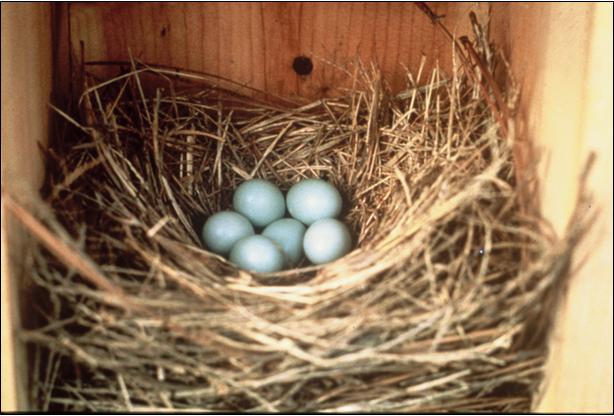 the bottom of the nest box. You may observe a number of courtship displays including the male AND female going into the nest box, the male feeding the female, wing-waving displays by the male, and the male diving toward the female randomly. Eventually, this all will lead to a completed nest and the beginning of egg-laying.
the bottom of the nest box. You may observe a number of courtship displays including the male AND female going into the nest box, the male feeding the female, wing-waving displays by the male, and the male diving toward the female randomly. Eventually, this all will lead to a completed nest and the beginning of egg-laying.
Bluebirds will start laying eggs in April at the earliest in Michigan, and may be several weeks later in the northern part of the state compared to the southern areas. Bluebirds usually lay one pale blue egg per day, up to as many as 7 or even 8. The most common numbers are 4 to 6.
A small percentage of bluebird eggs are white, but this doesn't seem to affect hatching rates. The female will start sitting on the eggs once ALL the eggs are laid. She will sit on them for about 12-14 days. During this time, she will occasionally come and go to feed. But, the colder the weather, the longer she will usually remain on the nest.
It is not uncommon that one, a few, or all of the eggs may be infertile. This may not be known until after the remaining eggs have hatched. Sometimes, the bluebirds will just build a new nest on top of the first nest containing infertile eggs. Then, the bluebirds will start to hatch! This will occur over a couple of days, but not much more.
After the birds are all hatched, the female will continue to brood them (sit on the nest) for several days. This is because the young have no feathers yet and still need the heat until they have gained enough strength and body mass to survive longer on their own. As the days progress, the bluebirds will become more active, gain size, and add feathers.
Both parents will bring food. Also, you will often see one of the parents remove what's known as a fecal sac from the box. This is a membrane-wrapped package of waste from each bird that is nature's way of keeping the nest cavity clean.
As the birds get bigger, the parents will have to make more frequent trips to bring food. If there is an extended period of cold, wet weather during this time, the nest could fail unless the bluebirds receive supplemental foods like meal worms or scrambled eggs.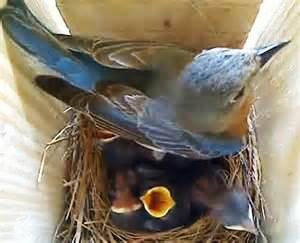
Bluebirds can fledge (leave the nest) anywhere from 16 to 21 days after hatching. When the birds get close to leaving, you can see them poking their heads out from the entrance hole of the bird house. It's important to NOT open the nest box when you are within 5 days or so of fledging. Otherwise, it can result in the birds prematurely fledging, which can lead to their demise.
Fledging is an exciting day for bluebird landlords, and it is a fantastic sight if you're lucky enough to be watching! Bluebird young are poor flyers when they first leave the nest and will often stay in a nearby tree or shrub (well hidden) for another week or so. This will enable them to finish fully growing out their feathers and become better flyers. The parents will often continue feeding the young during this time.
Sources: Bluebird Trails, A Guide To Success; Copyright 1993; By Dorene H. Scriven;The Bluebird Recovery Committee of the Audubon chapter of Minneapolis
Bluebird Book - A Complete Guide To Attracting Bluebirds by Don and Lillian Stokes. Little Brown and Co. New York, 1991.
